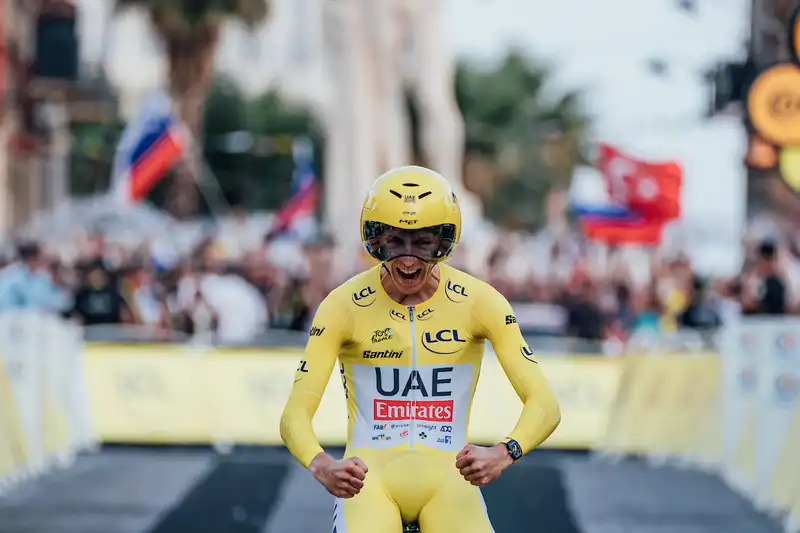Tadej Pogacar's physiology has been the subject of endless praise, debate, and frequent speculation, but in a recent interview, the Tour de France winner revealed some impressive details about his training and nutrition.
Interviewed by Peter Attia on the podcast “The Drive,” the Slovenian reflected on his career and his various Grand Tour victories, but it was the details of his training and nutrition that caught the most attention.
“I've been training with a heart rate monitor since I was about 12,” he said. 'So I know how my heart rate reacts when I'm tired or in good shape. So I can judge by heart rate alone, but it's good to compare heart rate to power.
“You have to pay attention to outside temperature, calibration, everything.
“And sometimes they can be off. You have to be careful with this.”For data-obsessed cyclists, Pogachar's revelation that the power range for Zone 2 is around “320 to 340” will pique their interest. He went on to describe the pleasure of spending a four-hour training ride in Zone 2.
“It's really hard to get big times in Zone 2 because there's a lot of climbing in Monaco,” he said. I'm trying to do Zone 2 times on climbs that are 20 to 40 minutes long.”
“But when I go back to Slovenia or other countries, or when I train in Calpe, Spain, or in the summer on flat terrain, I like to run in Zone 2 for about five hours.
Despite his admiration for the long hours of training in Zone 2, Pogacar admitted that he benefited most from training in Monaco. In my experience, training on your home road is the best.”
Asked to elaborate on his VAM, Pogacar replied, “If I train at 7 or 7.5 percent and give it my all, I think I can get 1,700 to 1,800 VAM in 15 minutes.”
Pogachar's focus has turned toward nutrition and weight in recent years.
“Sure, as a child you can eat whatever you want and not gain fat.
However, his current approach in racing is one of moderation, not hard restriction. If you restrict too much, if you don't touch chocolate for a month or six months, one day you will break down and go crazy.”
“So there has to be a balance with bad foods. In the off-season, I lose my appetite. Okay, vacation. I eat good, good quality food, and not so much quantity.”
His peak weight is 69 kg, occasionally reaching 70 kg. However, in the Tour de France, he keeps his weight around 65 kg.
With that in mind, his carbohydrate intake on the bike is carefully planned. In drinks, he takes in either 30 or 60 grams of carbohydrates per drink.”
“But on the hard stages, I prefer to have 60 grams in the bottle. 'In the hard stages, one should consume 120 grams per hour. In the hard stages you need about 120 grams per hour, and in the easy stages 60 to 90 grams is enough. So basically, we aim for that much per hour.”
It took a journey for Pogacar to get to consuming 120 grams per hour. He said, “Like five years ago, 120 grams per hour is impossible,” and credited food sponsor Enervit for producing a better product for him to consume during the race.
“Five years ago I was always pooping after stage races and long races. Now I can eat 120 grams and not have stomach problems.”
Not surprisingly, Pogachal's heart rate during sleep is low at 37 beats per minute.
“But if I'm not feeling well or really tired, some days I wake up at 48-49, and maybe even over 50.”
As for his maximum heart rate, he revealed that he recorded a 213 as a junior and that he regularly exceeds 200 these days.
He also began looking into HRV in 2021. He said, “But this year I started using more data to track HRV, or nighttime heart rate. And I have to say I like it a lot now.”
His HRV, he reveals, is consistent with a wider range of exceptional physiological values, ranging from 150 on a good day to the mid-30s on a bad day.
Not surprisingly, VO2max is a number that has historically been linked to natural physiology and performance, but here Pogacar teases that “it's been a while since I last tested it.”
“It's probably high.”
The full podcast, which includes a broader discussion of cycling's meteoric rise to the top, is available on various podcast platforms and on Peter Attia's website.
.

Comments